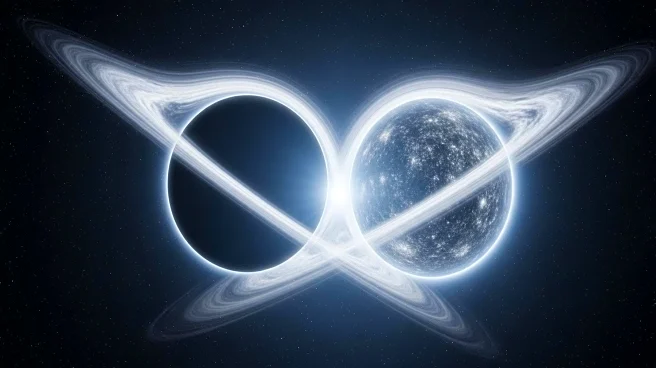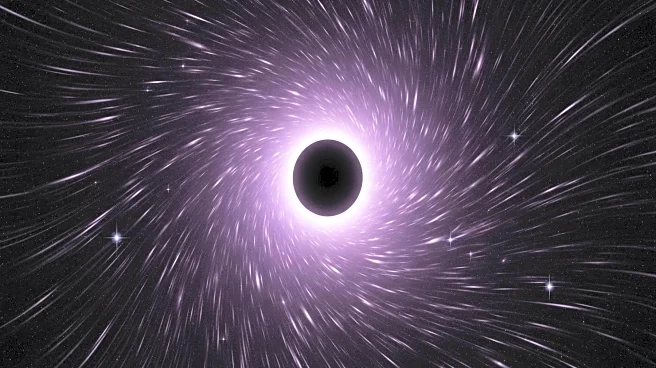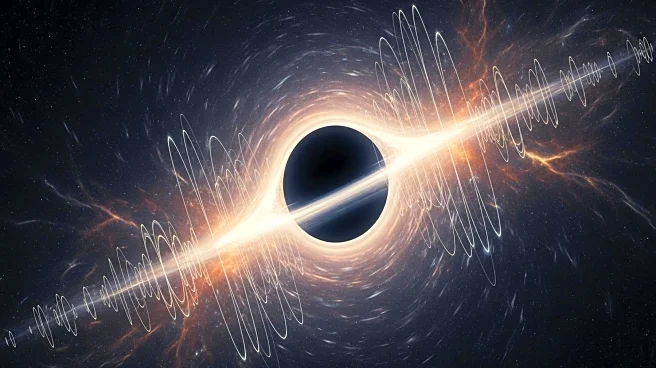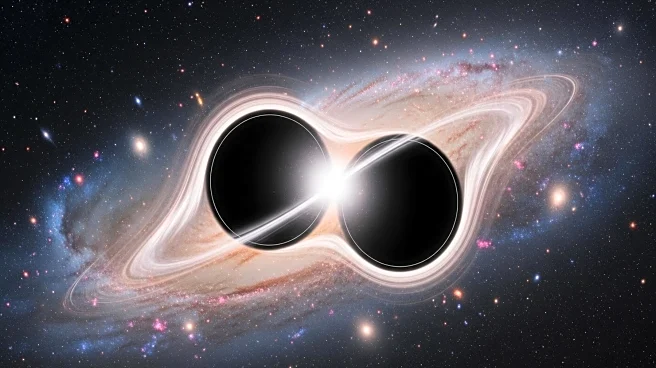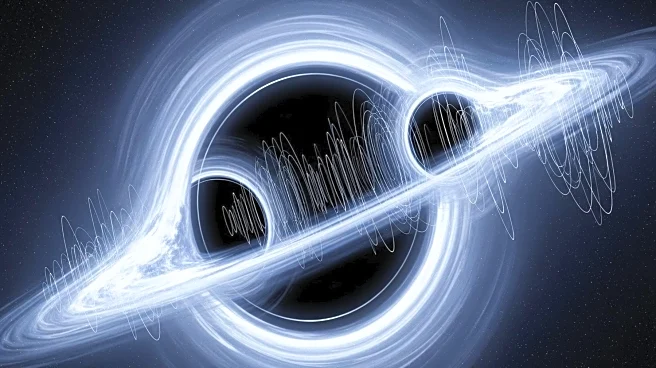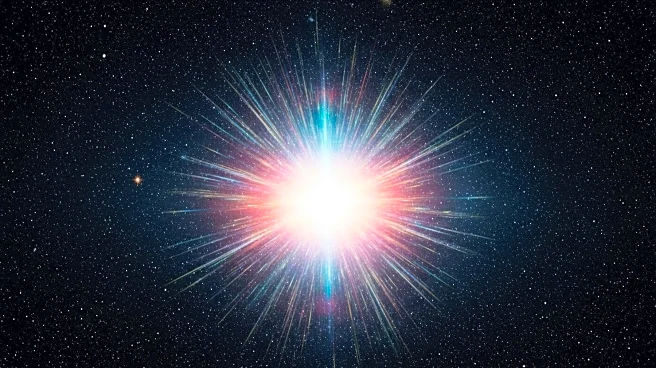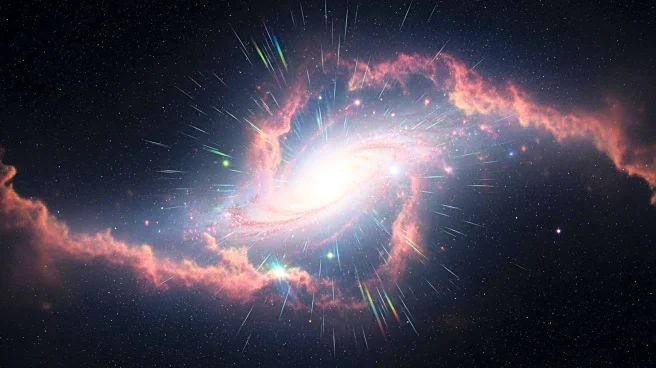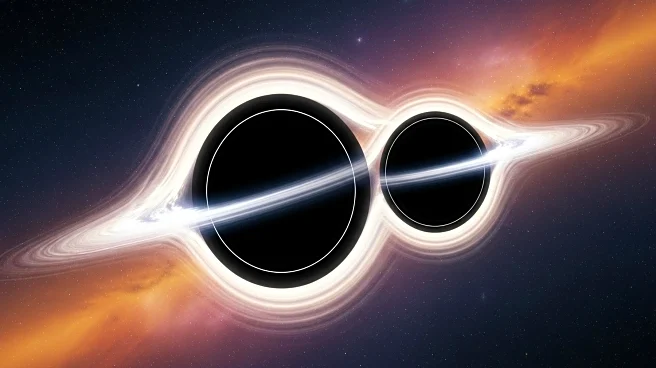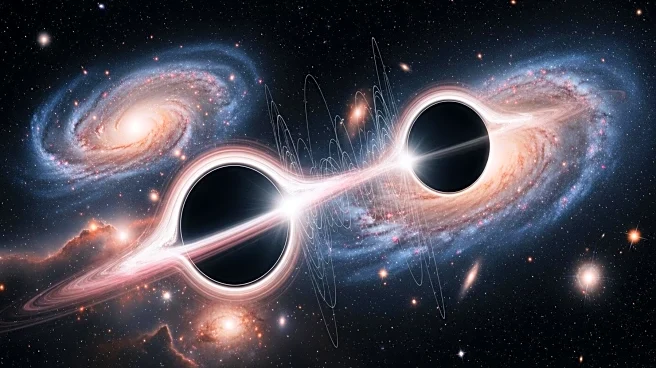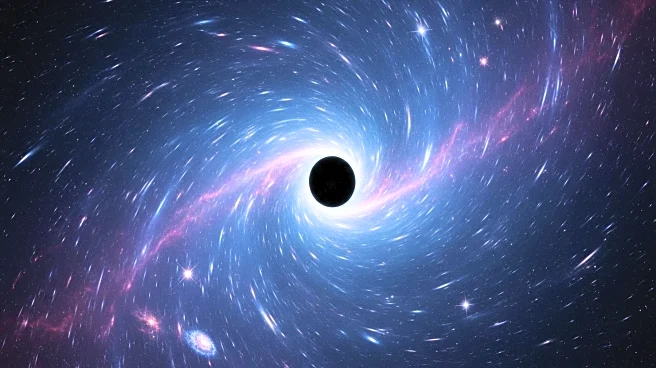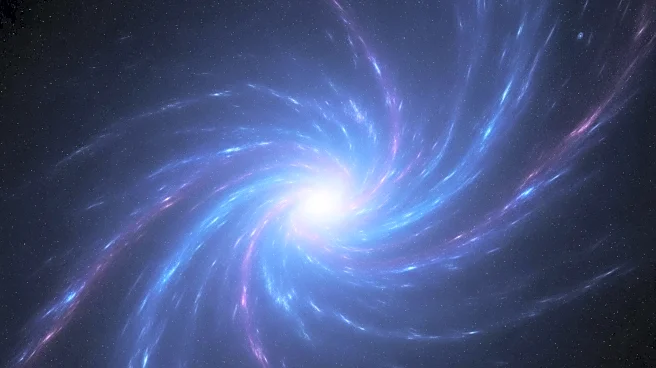What's Happening?
On September 14, 2015, the LIGO laser interferometer detected gravitational waves for the first time, marking a historic moment in astronomy. The event, designated GW150914, confirmed the existence of gravitational waves, which are ripples in space-time caused by massive objects like black holes. This discovery was made possible by the advanced technology of LIGO, which uses laser interferometry to measure tiny fluctuations in gravitational fields. The detection of GW150914 was the result of a merger between two black holes, located 1.2 billion light-years away, with masses 36 and 29 times that of the Sun.
Why It's Important?
The detection of gravitational waves has profound implications for astronomy and physics, offering a new way to observe the universe. It allows scientists to study cosmic events that are invisible to traditional telescopes, such as black hole mergers and neutron star collisions. This breakthrough provides insights into the fundamental nature of gravity and space-time, potentially leading to new theories and discoveries. Gravitational wave astronomy opens up possibilities for understanding the universe's most extreme phenomena, contributing to our knowledge of its origins and evolution.
What's Next?
With the successful detection of gravitational waves, LIGO, along with Virgo and KAGRA, continues to refine its technology to detect more events with greater precision. Future research aims to explore the correlation between gravitational waves and electromagnetic radiation, enhancing our understanding of cosmic events. Scientists are also investigating the potential for gravitational waves to reveal information about supernovae and other massive cosmic occurrences, expanding the scope of gravitational wave astronomy.
Beyond the Headlines
The discovery of gravitational waves challenges existing models of the universe and prompts new questions about the nature of space-time and gravity. It highlights the need for interdisciplinary research to explore the implications of these findings across physics, cosmology, and other scientific fields. The ability to detect gravitational waves could lead to breakthroughs in understanding the universe's structure and the forces that govern it, impacting both theoretical and applied sciences.
